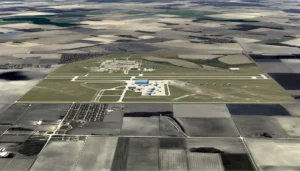[ad_1]
O’Fallon, Illinois is a small city located in St. Clair County. The city’s history dates back to the early 1800s when it was first settled by European immigrants. Over the years, the city has grown and evolved into what it is today, but it has managed to preserve much of its rich history.
At the heart of O’Fallon’s history is its location. The city is situated on the edge of the fertile American Bottoms, which was a significant trading area for Native American tribes long before the arrival of the Europeans. The abundant game and fish in the area attracted many settlers who made their homes along the banks of the Mississippi River.
The first European settlers in the area were French traders who arrived in the mid-1700s. They established trading posts and forts along the Mississippi, including Fort Kaskaskia, which was located just east of O’Fallon. The fort was a strategic trading post that allowed the French to trade with Native American tribes and keep the British at bay.
In the early 1800s, German immigrants began arriving in the area, and by 1835, a small community had formed. The village was named O’Fallon after a railroad executive, John O’Fallon, who helped to establish the Illinois Central Railroad in the area. This new railroad brought an influx of people and further development to the village.
By the late 1800s, O’Fallon had become a thriving city with a thriving downtown area. The streets were lined with businesses, including banks, hotels, and saloons. The city continued to grow throughout the 1900s, and today, it is a bustling community with a diverse population.
Many of the buildings in O’Fallon’s downtown area have been preserved and restored, giving visitors a glimpse into the city’s rich history. One such building is the O’Fallon Station, which was built in 1906 as a passenger depot for the Illinois Central Railroad. The building is now home to the O’Fallon Historical Society Museum, which features exhibits and artifacts that tell the story of the city’s past.
Another notable building in the downtown area is the William Rainey Harper House. Harper was a renowned educator who lived in the house for several years while working on his doctoral thesis. The house was built in the 1860s and has been restored to its original condition, complete with period furnishings.
O’Fallon’s rich history can also be seen in its many parks and natural areas. Hesse Park, for example, was once the site of an early settlement, and the original homestead still stands on the property. The park features walking trails, picnic areas, and a playground, making it a popular destination for families.
In conclusion, O’Fallon, Illinois has a rich history that is deeply rooted in its location and its people. From its early days as a trading post to its current status as a thriving city, O’Fallon has managed to preserve its past while embracing the future. Whether you’re a history buff or just looking for a great place to visit, O’Fallon is worth exploring.
[ad_2]







